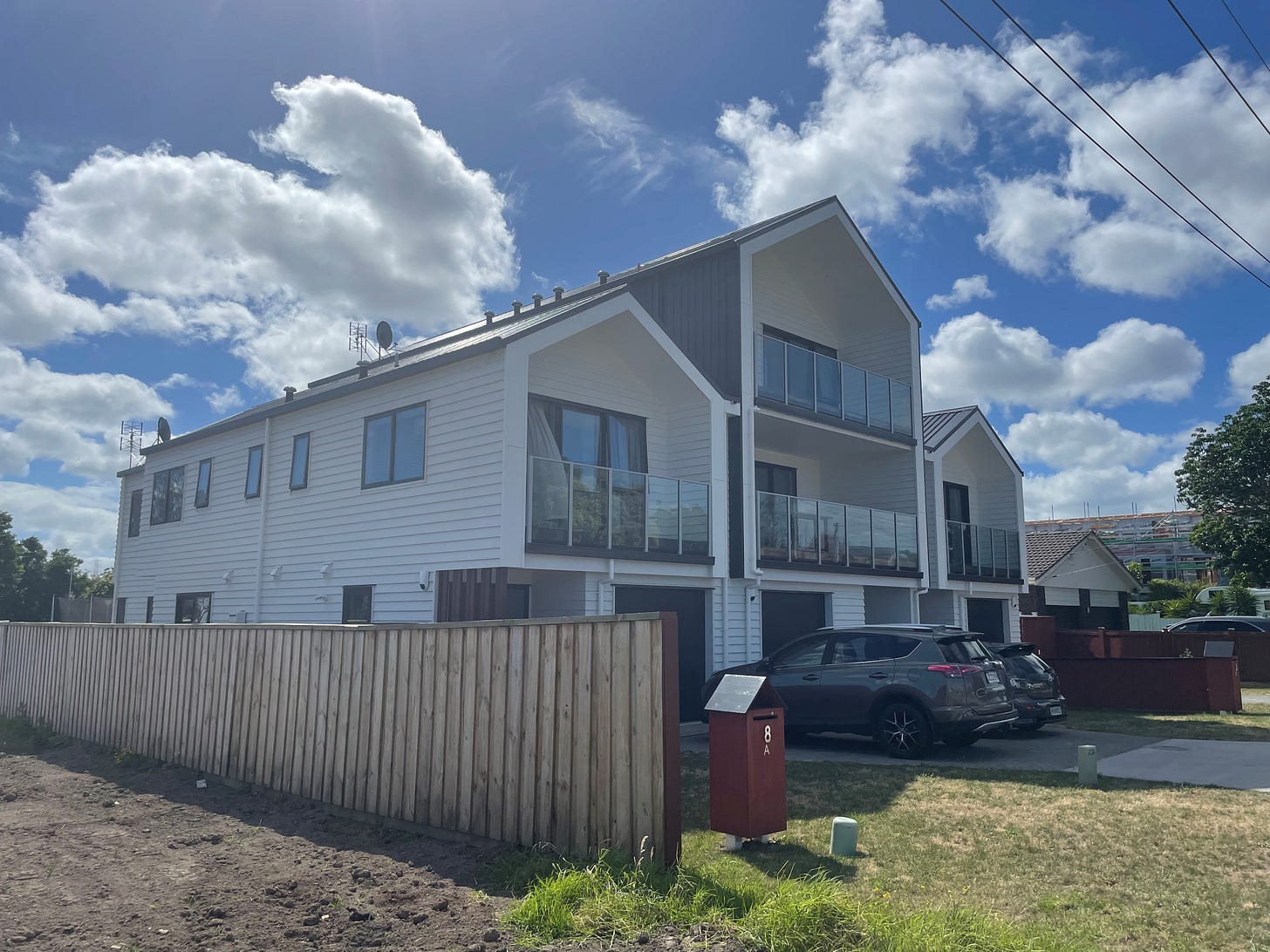The future of the Medium Density Residential Standards
Yesterday, the leader of the National Party, Christopher Luxon, signalled that the National Party will seek to change the bipartisan housing policy the Medium Density Residential Standards (MDRS) saying “I think we’ve got the MDRS wrong.” This was an interesting comment, particularly as the MDRS only came into effect in August 2022, so will have delivered limited houses so far, making evaluation difficult.
We will have to wait a few weeks to see the detail of National’s proposed changes. In the meantime, it is key to remember why enabling urban intensification is critical to meeting our goals and how reverting to largely greenfield growth will not achieve the outcomes we want, nor is something we can likely afford.
All new homes in our cities create the need for new infrastructure. However, the challenge greenfield development comes up against is higher costs per unit for the supporting infrastructure, when compared to urban intensification. Building within the existing urban area utilises existing capacity and can deliver more efficient services like public transport and infrastructure, even if some upgrades are required.
The nature of greenfield areas, is they are some of the lowest-demand places to build, due to lack of proximity to jobs, education and amenities. This equates to lower densities meaning the high infrastructure costs to connect new suburbs are split across a low number of dwellings.
I wrote about the cost of infrastructure in Drury earlier this year. Where Auckland Council planning to increase the required development contribution, per household equivalent unit, from $22,564 to $83,251. However, this will still only cover 49% of the costs of supporting infrastructure to support the new neighbourhoods. This is also before including the cost of more major Central Government investments like electrification of the rail line to Pukekohe and new stations in Drury to support this growth.
Urban intensification also creates demand for upgraded infrastructure but typically at a lower cost per unit, while supporting renewal of ageing infrastructure that we would need to replace at some point anyway. These costs can be spread across more units, through the increased density, to deliver a lower cost per unit and more affordable growth. Urban intensification can also contribute to fixing many of the other challenges our cities face with emissions from transport, struggling town centres and low council rates bases spread across wide urban areas.
This is why we must enable widespread urban intensification to ensure the market can function efficiently and deliver new homes within the existing urban area at a lower cost. While there is room for improvement, the Medium Density Standards are mostly positive and important to improving housing supply and affordability.


